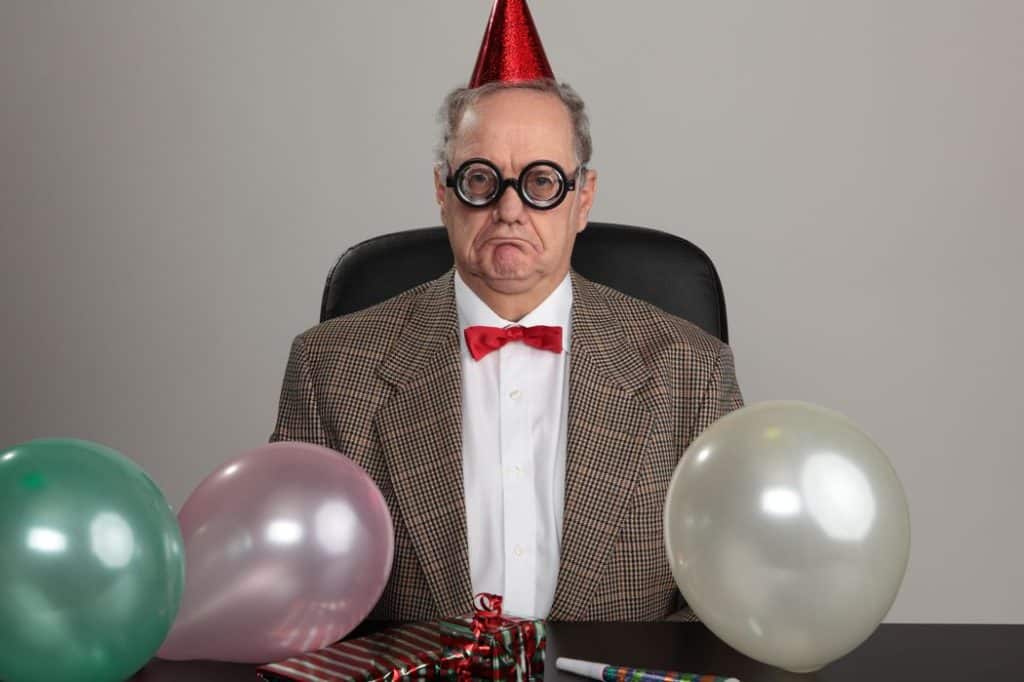
Whether you’re already retired or not, you probably know two types of retirees. Some of them have never had so much fun. They embrace the freedom of their senior years with both hands. Their days are so full of meaningful activities that they joke “I don’t know how I ever had time to work.” Others, though, hang up their work clothes one Friday and then seem to face the remaining years of their live like a blank page. What next, they seem to ask? What am I supposed to do with all this time?
I always remember that scene in Godfather II where Hyman Roth, the aging gangster who is still scheming to kill people and make yet more millions, is whiling away his afternoon alone watching TV while his wife makes him a sandwich.
What can we do to make sure we’re in the first category — that our golden years are as rich and full as possible, rather than an empty wasteland of daytime TV? It’s not just about being busy; it’s about making sure that when we’re retired we get the most enjoyment out of all that free time we’ve got left and which we’ve earned.
After all, many of us are going to have 20, 30 or even more years of free time after we finally hand in our company phone.
To get some answers I spoke this week to Catherine Price, author of a forthcoming book, “The Power of Fun.” Price, an established science writer and the previous author of How To Break Up With Your Phone, has investigated the surprisingly tricky questions of what is really “fun” and how can we get more of it. This included not only delving into all the scientific research on the subject — there is less than you would hope — but also recruiting a “Fun Squad” of 1,500 volunteers around the globe, to work out what makes them really, truly, happy.
What did she find, and how can it help us?
In a nutshell: If we want to make sure we have real fun for the rest of our lives, and especially in retirement, we can’t just leave it to chance or hope for the best. We have to think about it specifically, and plan for it, and take steps to get it.
“One of the biggest things for people to think about is that leisure time is not going be inherently enjoyable,” she says. “There is ‘work’ to be done… Watching Netflix for 6 hours a day for the rest of your life may entertain you, but is not going to give your life meaning.”
And thanks to technology, she warns, our hours are increasingly filled with “fake fun” – from binge watching TV to scrolling through “social” media for hours at a time. “True Fun,” she argues, is different. Her research leads her to believe when we have the most fun we are experiencing three things.
The first is play: We are doing something for its own sake, whether it’s playing games or music, hiking a mountain, skiing, or whatever. The second is “connection”; even introverts, Price found, said the times they had the most fun tended to be when they were experiencing a connection with others. And the third is called “flow,” meaning you get so engrossed that you lose track of time.
Fun isn’t frivolous, either. There is enormous scientific evidence that happiness and well-being are also associated with better health and longer life. Have more fun in retirement and we’ll probably stay healthier and live longer.
Price also described true fun as activities that are both enjoyable and energizing. The kind of thing that makes you leap out of bed in the morning, eager to get into it.
So how do we make this work for us? It’s a three-stage process.
The first step, Price argues, is finding out when we’ve experienced the most fun in our own lives. After all, each of us is unique. “True fun,” she says, “is an emotional experience, not an activity.” She encourages us to think back over our lives — going all the way back to childhood if need be, to identity the moments when we had the most fun, when we felt most alive and engaged and when we laughed the most. She also suggests keeping a notebook or journal for a couple of weeks, and writing down moments that involve these magic elements of play, connection or flow.
The second step is working out what these events have in common and what themes emerge. What are our “fun magnets” and “fun factors,” as she calls them? What are the activities, the people, and the settings that typically generate the most fun for us? Do they involve physical activities like sports? Creativity? Music? Shared group experiences? Do we have the most fun in big groups or small ones? Playing chess with a friend in a caffe, or going to a big concert? Everyone is different.
And the third step, naturally, is taking steps to use these discoveries to fill our lives with more fun.
Price uses the acronym SPARK for this one. Make space for fun — both physical space and space in calendars. Pursue passions, activities and hobbies. Attract fun through pro-fun actions and a pro-fun mindset. Rebel against the rules, habits and conventions that hold us back. Finally, keep at it — because persistence is a key ingredient of success in pretty much everything.
